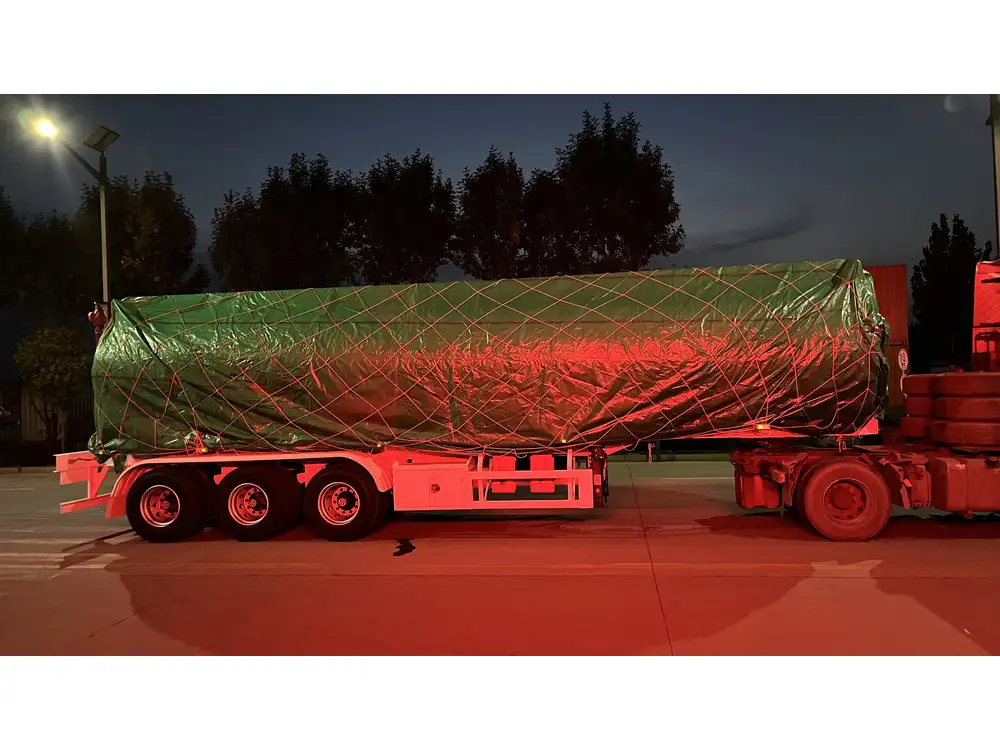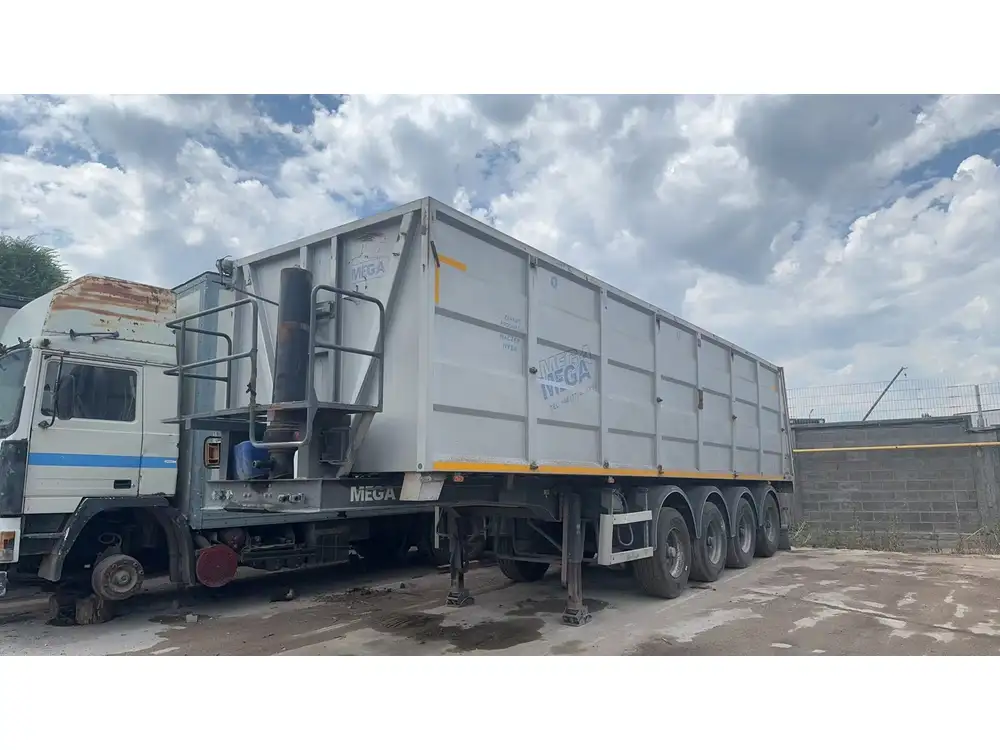When it comes to the logistics and transportation sector, one of the most frequently asked questions is regarding the wheel count on a single-trailer semi-truck. This seemingly simple question can unfold a tapestry of complexities and considerations involved in semi-truck configurations, load capacities, and regulations. In this comprehensive guide, we will explore the anatomy of a semi-trailer truck, dissect the factors affecting wheel counts, and delve into industry specifications and regulations that govern these vital vehicles.
The Basics: What is a Semi-Trailer Truck?
Before we dive into the wheel counts, it is essential to grasp what a semi-trailer truck entails. Essentially, a semi-trailer truck consists of two primary components:
Tractor Unit (or Prime Mover): This is the front part of the vehicle, primarily responsible for providing power and steering the entire unit. It typically houses the engine and is designed to tow the trailer.
Semi-Trailer: This is the cargo-carrying section that is designed to be towed by the tractor unit. Unlike a full trailer, which has wheels at both the front and back, a semi-trailer has wheels only at the rear and is connected via a fifth-wheel coupling.
Standard Wheel Configuration
For a typical single-trailer semi-truck, the standard wheel count breaks down as follows:
| Component | Standard Wheel Count |
|---|---|
| Tractor Unit | 2 to 4 (most commonly 2) |
| Semi-Trailer | 2 to 8 (most commonly 4) |
Thus, the total wheel count for a single trailer semi-truck commonly ranges from 4 to 6 wheels, but can extend up to 10 wheels or more based on specific configurations and load requirements.

Configurations and Variations in Wheel Counts
Though the prevailing configuration may seem straightforward, the particulars can vary significantly based on several factors. Below are some significant wheel count variations on semi-trailer trucks and the reasoning behind them.
1. Common Configurations
Two-Axle Designs: In semi-trucks with a basic two-axle design, you will typically find two wheels on the front axle of the tractor and two on the rear axle of the trailer. This sums up to a standard four wheels configuration.
Three-Axle Designs: These designs are prevalent for heavier payloads or specialized transportation. Here, the tractor might possess two wheels on the front axle and four on the rear, paired with four wheels on the trailer, culminating in a total of eight wheels.
2. Load-Bearing Capacities
While it’s tempting to standardize wheel counts, it’s critical to remember that load-bearing capacities influence these numbers. Heavier loads often necessitate more axles, thereby increasing the wheel count. In fact, certain heavy-duty semi-trailer trucks can sport configurations that allow for up to 12 or even 18 wheels.

3. State and Federal Regulations
Various jurisdictions enforce stringent regulations governing wheel counts depending on the allowable Gross Vehicle Weight Rating (GVWR). This can lead to adaptations in wheel configurations, as operators must comply with federal or state law regarding safety and load limits. In some instances, additional wheels may provide better weight distribution, enhancing safety.
Dissecting the Impact of Wheel Counts on Performance
The wheel count on a semi-trailer truck has significant implications that extend beyond mere aesthetics. Understanding these impacts is crucial for operators invested in safety, fuel efficiency, and load management.
Fuel Efficiency
Lighter trucks often consume less fuel, but adding more wheels may slightly decrease fuel efficiency due to increased rolling resistance. However, these benefits can offset when recognizing the stability provided by additional wheels, especially when carrying heavier loads.

Stability and Control
A greater number of wheels can enhance stability and provide superior control, especially during adverse weather conditions. More axles distribute weight more evenly and can reduce the risk of tire blowouts, a crucial aspect for safety and efficiency.
Maintenance Costs
While more wheels can mean better load distribution and stability, they may also result in elevated maintenance costs. Each wheel requires monitoring, rotation, and occasional replacement, which can add to the operational budget.
| Aspect | Fewer Wheels | More Wheels |
|---|---|---|
| Weight Distribution | Less Stable | More Stable |
| Fuel Efficiency | Generally better | Lower due to resistance |
| Maintenance Costs | Lower | Higher |
Practical Considerations for Owners and Operators
When managing a fleet of semi-trailer trucks, operators must consider various practical elements tied to wheel configurations.

Choosing the Right Configuration
When selecting wheel configurations, operators should factor in:
Common Load Types: Consider the loads that are frequently transported. For heavier, bulk materials, investing in a higher axle count may be warranted.
Regulatory Compliance: Familiarize yourself with local regulations regarding maximum allowable GVWR and corresponding wheel configurations to avoid legal issues.
Route Conditions: Assess the operational routes. If the terrain is challenging, increased wheel counts may afford greater traction and control.
Calculating Load and Towing Capacities
Understanding the principles behind load calculations can also aid in determining wheel configurations. The formula typically involves:
[ \text{Total Load} = \text{Weight of Trailer} + \text{Weight of Cargo} + \text{Weight of the Tractor} ]Take the combined vehicle weight, including passengers and additional equipment, and consult the manufacturer’s specifications to determine if you meet allowable limits.
Frequently Asked Questions (FAQs)

How does wheel count affect legal compliance?
Truck owners must abide by regulations stipulating maximum weight limits based on the number of axles. Exceeding these limits may result in fines, accidents, and insurance complications.
Can wheel configurations impact insurance costs?
Insurance costs can vary based on risk profiles, which wheel configurations can influence. More wheels may indicate a safer vehicle, potentially lowering insurance premiums.
Are there any technological advancements for semi-trailer trucks?
Indeed, innovations such as automatic tire pressure monitoring systems now enhance the safety and efficiency of trucks significantly. Keeping wheels properly inflated maximizes performance and lifespan.

Conclusion: The Importance of Understanding Wheel Counts
In essence, while the question of “how many wheels would you find on a single-trailer semi-truck” might appear simple, it encompasses layers of considerations that any truck operator should understand thoroughly. From basic configurations to weight distribution, safety, and legalities, every aspect plays a vital role in making informed operational decisions that can influence productivity and compliance.
Investing time in understanding the complexities surrounding wheel counts can provide significant advantages in a highly competitive and regulated industry. We hope this guide has illuminated the topic for you, equipping you with essential knowledge to navigate the intricacies of semi-trailer truck operations effectively.



